Yes, you can lift heavy things safely

Clang, grunt, SLAM!
Advertisement
Cleveland Clinic is a non-profit academic medical center. Advertising on our site helps support our mission. We do not endorse non-Cleveland Clinic products or services. Policy
Clang, grunt, SLAM!
When you hear these sounds coming from the free weight area of your local gym, it’s easy to think that strength training will never be your thing. Don’t be so quick to judge. Setting off the Lunk Alarm every 15 minutes is not a prerequisite for lifting weights. But it does help to have a good coach in your corner and the understanding that gains aren’t the only goal.
If you want a strength training alternative to hand weights or kettlebells, barbell training might be your sweet spot. So, how can you tell if it’s right for you and how do you even get started with it? Personal training coordinator Scott Crabiel shares some helpful advice for easing into this form of strength training.
Before starting any workout routine, consider your mobility and the quality of your movement. This can help you stay safe and keep you in the game.
“You don’t want to overload your body, nor do you want to add mileage to your body if you don’t move well. That’s how people become more prone to injuries,” says Crabiel.
When working with clients, Crabiel always starts the process by examining movement quality and mobility. He says when mobility is limited and you decide to take on an activity that involves more movement or even lifting heavy objects, injury is inevitable.
Advertisement
“A lot of people think mobility is flexibility. Flexibility is more along the lines of if someone can touch their toes. Mobility is more about how the joints are involved when you move. For example, when you squat, the ankle, knee and hip joints are involved. Any limitation in one or more of those three joints is going to affect the quality of someone’s movement.”
Crabiel adds that stability, balance, strength, power and endurance are also critical to barbell workouts. However, if you’re unable to move well, it’s going to be tougher to lift weights at the gym and pick up objects around the house.
Barbell training isn’t something that you want to start alone. To ensure that your movement and form is where it should be, work with a certified trainer.
“If you’re going to venture into something and you want to see good outcomes, an investment in any type of coach to get you started with the fundamentals is well worth your time. Work with someone who has a strong level of expertise and the ability to evaluate your needs as an individual. That’s a tremendous recommendation for getting started,” says Crabiel.
After determining the adequate activity level for his clients, Crabiel starts barbell training with what he calls the “core fundamental movements.”
He says our body is capable of performing about six different movements. They include:
Barbell training goes far beyond focusing on how to move with weights. A lot of the movements involved are ones that we do daily. If you can master them, you’ll be OK whether you’re at home or the gym.
“I like to teach people how to squat properly and many times, I’ll do that by having them use a chair. This teaches them how to be more aware of the alignment of their hips, knees and ankles. This is important because it can help people keep their heels on the floor like they’ll need to do when squatting.”
With a hinge movement like a deadlift, Crabiel teaches people how to lower and lift the bar in a way that can be applied to real-life situations.
“When I’m teaching a deadlift movement, I’m also teaching people a good way to pick their kids up off of the floor or a 50-pound bag of peat moss off the ground. I start them off with a squatting pattern, a deadlift pattern and then some type of push and pull motion. The homework that I give clients isn’t necessarily things that would stress their physiology. Instead, they’re motions that will help improve particular movement patterns which will make their time in the gym more efficient when they lift and lower a loaded barbell.”
Advertisement
In addition to doing squats in a chair, Crabiel suggests using a filled duffle bag or milk crate to practice deadlifts at home. You don’t need to make them super heavy either. The main thing is to go slow as you lower and lift the object.
You could also practice chest presses, rows and overhead presses with a broom, hand weights or cans. Just remember to go through the motions slowly and in a controlled manner. If you need points of reference, you can follow along with tutorials online or ask a trainer for pointers.
Living with either doesn’t necessarily mean that weight training is off-limits. A trainer can develop a modified workout plan to avoid further injury or complications.
“If you’re injured or living with a pre-existing issue, there are certainly some movements that you’ll want either avoid or modify, especially if you’re living with vertigo or a balance condition. But you can still train with a barbell. I just recommend not training unsupervised.”
To move efficiently and safely pick up weight, Crabiel says you need to be able to brace the midsection. This allows you to support yourself and to connect the lower body to the upper body. A weightlifting belt could interfere with your ability to do so.
Advertisement
“Is a belt necessary? Absolutely not. There are a few instances where people are moving maximum weight and they could benefit from wearing one. That benefit more than anything would be the psychological effect of feeling like they have some form of additional support. But in most cases, a belt is not ideal.”
A common misconception about weight training is that it will have you looking like the Hulk. However, Crabiel says you’d have to spend hours in the gym to bulk up that much.
“Believe it or not, lifting heavy weights for fewer repetitions does not cause huge increases in muscle mass. Bulking up would require something along the lines of hypertrophy training, a higher-volume routine that involves more sets (the number of times that you do a group of exercises) and repetitions (the number of times that you repeat a specific exercise). Hypertrophy training stimulates an increase in overall muscle cell volume where strength training is more demanding on the nervous system.”
Crabiel adds that strength training causes muscle fibers to become denser. As a result, people firm up more.
“A good strength training routine will add some muscle to your body, but not nearly as much as high volume, moderate weight, hypertrophy workouts. It’s virtually an impossibility to bulk up from strength training as these types of workouts fatigue your nervous system before muscle tissue disruption reaches a level that you would see with hypertrophy programs. Building muscle and adding protein tissue to your body is not an easy feat. You’d pretty much have to lift weights full-time to develop a significant amount of muscle.”
The American College of Sports Medicine (ACSM) recommends eight to 10 multi-joint exercises two to three times a week. With these exercises, they suggest two to three sets of eight to 10 repetitions with good form. You’ll also want to make sure that you’re lifting and lowering the barbell in a controlled manner during each movement. Crabiel says good-quality strength training sessions could run anywhere from 60 to 90 minutes. He also suggests adding in three to five minutes of recovery time between your sets.
Advertisement
According to ACSM, strength training can help manage conditions like:
Weight training can reduce the severity of musculoskeletal injuries, increase bone mineral density, help decrease abdominal fat and improve your overall heart health.
A study published in 2019 showed that strength training can be just as effective as aerobic exercise when it comes to lowering the risks of chronic conditions like Type 2 diabetes and cardiovascular disease. Other benefits include:
As you start barbell training, you might feel more and more confident after each session. There’s nothing wrong with that. But the key to lasting results is to take your time and not get reckless by trying to load more weight on the bar before you’re ready. That will only lead to injury.
“I always encourage people to be patient because I would hope that they would want to be in this for the long haul. To keep training, you have to stay healthy and not overdo it. I would much rather see people move less weight with more integrity than try to move more weight by compromising their speed or form to get it done.”
Learn more about our editorial process.
Advertisement
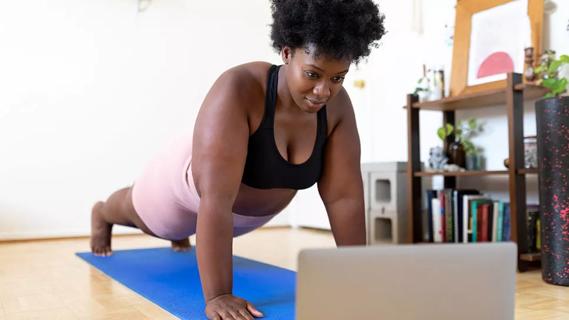
The exercise — which you’ve probably been doing since grade school — can be intimidating, but proper form can help
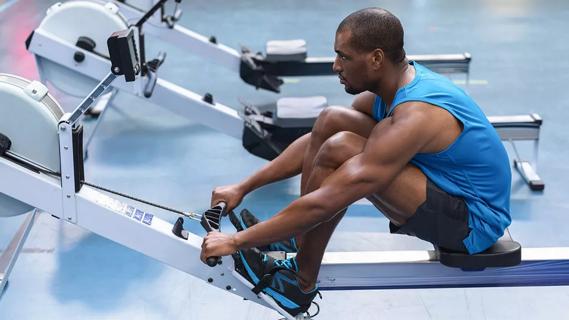
Exercise lowers risk for heart conditions, improves mental health and reduces visceral fat that can compromise your organs

Ask questions, get referrals and consider if someone is a good fit for you and your fitness goals
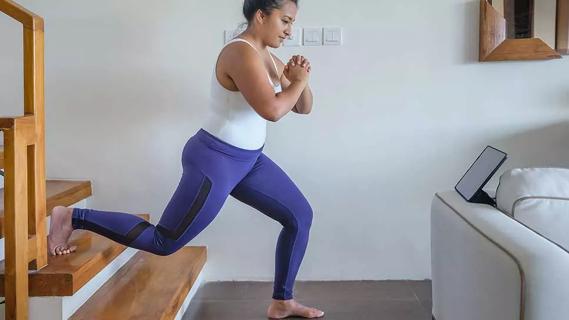
Expect a few bumps in the road, work out for the right reasons and give yourself some credit

Jump into the swing of things to improve your coordination, burn calories and get your heart rate going
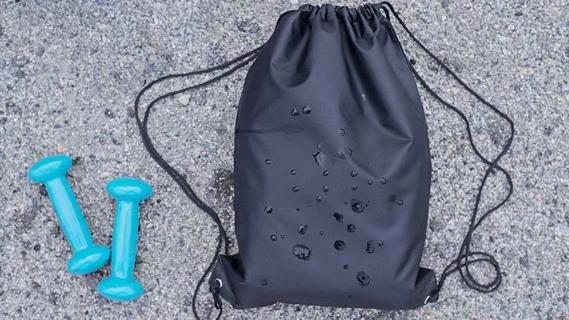
Walking with a weighted backpack is a low-impact, full-body workout that’s growing in popularity

A super high heart rate means you’re burning more than fat
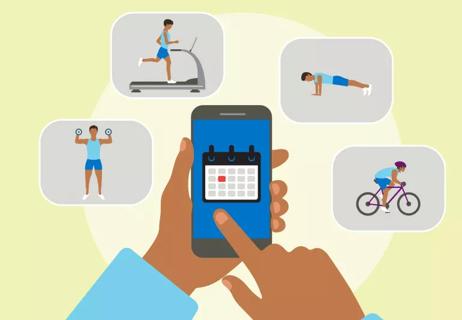
Meet your workout goals by accounting for frequency, intensity, time and type

Type 2 diabetes isn’t inevitable with these dietary changes

Applying a hot or cold compress can help with pain